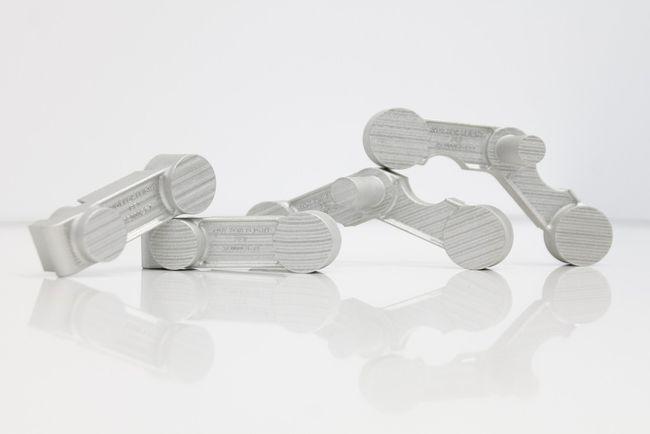Guide: According to a report on GE’s official website on November 17, based on the early success and momentum of the Metal Additive Manufacturing Pathfinder (Pacer Edge) program, the U.S. Air Force and GE announced that they have entered Phase 3 of additive manufacturing. The stage will face the long-term procurement of the US Air Force and outdated large parts.

GE uses additive manufacturing (aka3D printing) of cobalt-chromium cranks and cross-axle arms
Aircraft engine components that are considered “cold starts” are those that take more than 300 days to source. It is estimated that the U.S. Air Force has more than 800 “cold-start” engine parts per year. “The first priority for the Air Force and GE team was to create a 3D digital technology data package (TDP) for hard-to-procure, obsolete, long-cycle large parts,” said Alexa Polites, program manager for GE Additive Manufacturing. Four airworthy, near-net casting prototypes are available.” Over the next few years, the combined USAF and GE team plans to create at least five TDPs on USAF sustainment platforms, with increasing technical complexity.
Zach Miller, Director of the Advanced Manufacturing Program Office, Air Force Rapid Repair and Maintenance Office, said: “The collaboration between GE and the Air Force legitimizes the use of additive manufacturing to meet critical needs for aging aircraft parts that are not supported by existing supply chains. “The Pacer Edge program is accelerating the U.S. Air Force’s commitment to metal3D printingWidespread adoption to organically address supply chain shortages and deliver on its promise to improve support for warfighters by dramatically reducing lead times and creating additional procurement options. “
Phase 3 has successfully printed two components, a crank and a cross-axis arm (pictured above), in cobalt chrome at GE’s Additive Manufacturing facility in Cincinnati, Ohio, on the Concept Laser M2 Series 5. Work has also progressed on other components using Alloy 718. The cornerstone of the Pacer Edge program, jointly advanced by the Air Force and GE, is the establishment of an organic capability at Tinker Air Force Base. One way to achieve this is to ensure that the intellectual property generated in the Pacer Edge program is owned by the U.S. government. This will allow the Air Force and Department of Defense to print these components themselves in the future. The program is on track with the goal of delivering airworthy production castings to the U.S. Air Force in spring 2022.
“While creating the TDP, GE Additive is working closely with our U.S. Air Force counterparts to move production capabilities to Tinker Air Force Base,” said Joe Franzen, GE Additive Manufacturing Technology Account Manager. Organic, airworthy metal will be built for the U.S. Air Force3D printingability. “
(responsible editor: admin)


0 Comments for “Air Force and GE’s Metal 3D Printing Pathfinder Program Reaches Next Milestone”